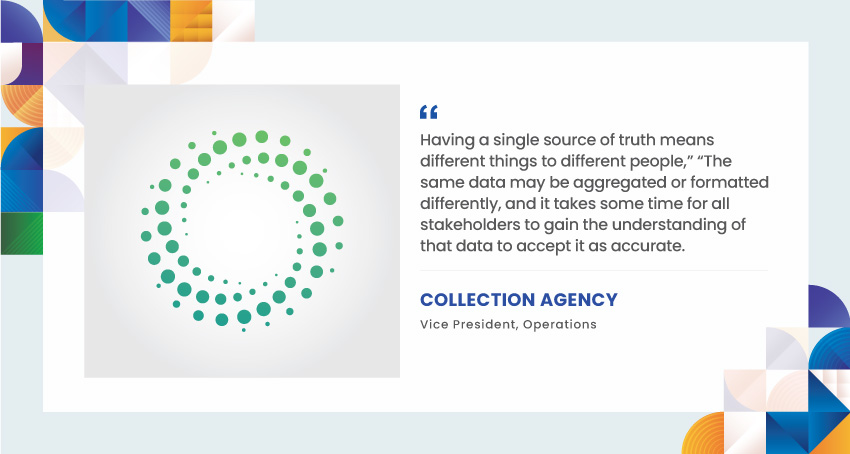The Challenges Of Building BI For An AgencyBusiness Intelligence

Overview
A leading collections agency with specialization in the healthcare space have grown tremendously over the past ten years, leveraging a unique approach to the market, combined with a heavily analytics-driven management philosophy.
Challenge
To drive analytics at all levels of the organization, the collection agency worked with a tech contractor to build a state-of-the-art data warehouse. This project involves the aggregation of operational source data from multiple systems of record, such as the Collections Management System, speech analytics, financials, the payroll system, among others. The data then needs to be normalized and very tightly defined to ensure all sides of the data cube are correctly aligned. This process proved challenging, as the systems of record presented a moving target and the construction project slid in the wrong direction.
Solution
To get a head start on the problem, the collection agency decided to bring in the IPerform Analytics (IPA) platform. With IPA, the team got an out of box standard data framework tailored to the collections business process. IPA provided to be a fast track to build the data warehouse, giving the team the time needed to staff up with analysts.
The first source of value has been the production of industry-beating client reports that start with IPA standard functionality but are then augmented by the agency’s unique data visualization. This has proved very useful in working with the agency’s clients. Since then, the project has produced reports for collector KPIs, changes to KPIs, revenue attribution, staffing models, cost to collect, and client profitability.
Results
Leveraging Provana’s data-driven BI as a Service, the collection agency:
- Normalized multiple disparate sources of data that were previously hard to join together.
- Reduced the spend on its data warehousing solution.
- Built a standard set of dashboards that can be used to manage all aspects of the business.
As the reports get rolled out, a series of workshops are held to educate users on the data aggregations. People get used to seeing data a certain way, with specific exclusions, so when that changes it takes some time to explain the new structure and regain confidence in the data.
Reduced
The spend on its data warehousing solution
Built a
Standard set of dashboards
Normalized
Multiple disparate sources







